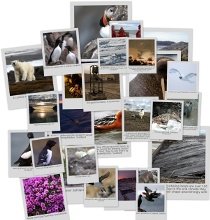Holiday Assistant
UNIS (University Centre on Svalbard) is, of course like almost everything up here, one of the worlds northernmost places to get university level education. It’s not just an university. It is an institution, which tends to change lives. It gives people everything they need: cool (also literally) things to do, good friends, home and an understanding of the beauty which lies under the barren landscape of Arctic. The institution and the people there has given me so much, that I have already forgotten more than a lot they have given to me. However, I am grateful.
Good thing about UNIS is that it doesn’t stop. People tend to come back. After you have got your education, they need you to do jobs, which are not exactly tricky, but need some knowledge about the area and about the rules when working in the Arctic. One this kind of jobs is the holiday assistant job at UNIS Logistics Department. Days are mostly spent on the field driving with a PolarCirkel (the manufacturer, photo above) speedboat people and equipment to various destinations around Isfjorden. If there is the job that is supposed to be the funniest in the world, it must be this one. Sun-glasses, motorboat with a big engine, rough seas and pretty girls looking like seals in their orange survival suits. Just like the scientists in the Hollywood movies. Bitty that it lasts only few weeks a year.
Read more...







